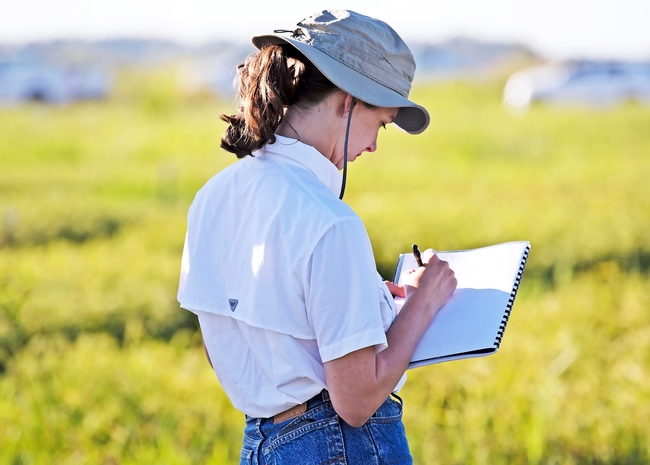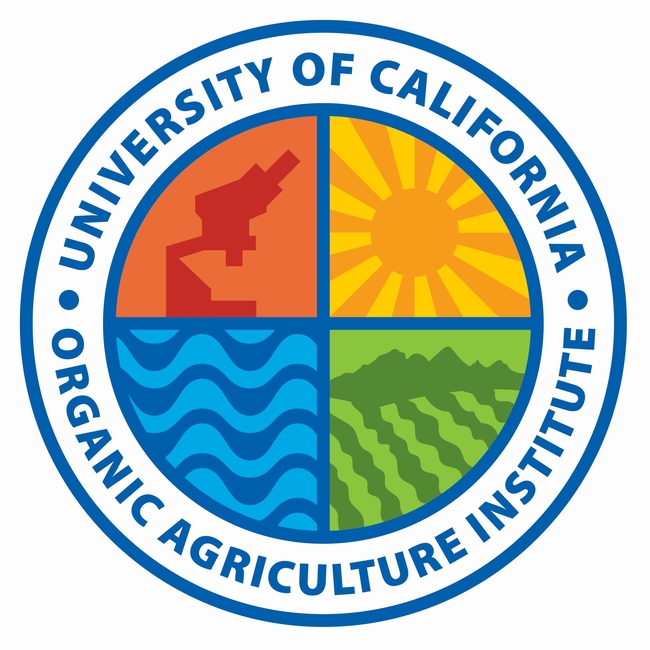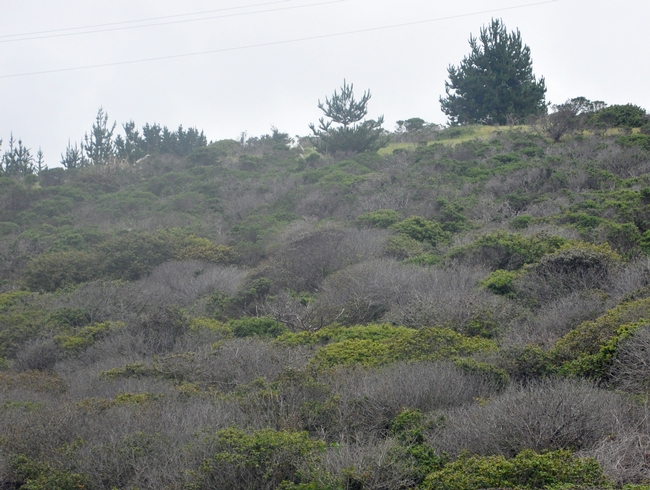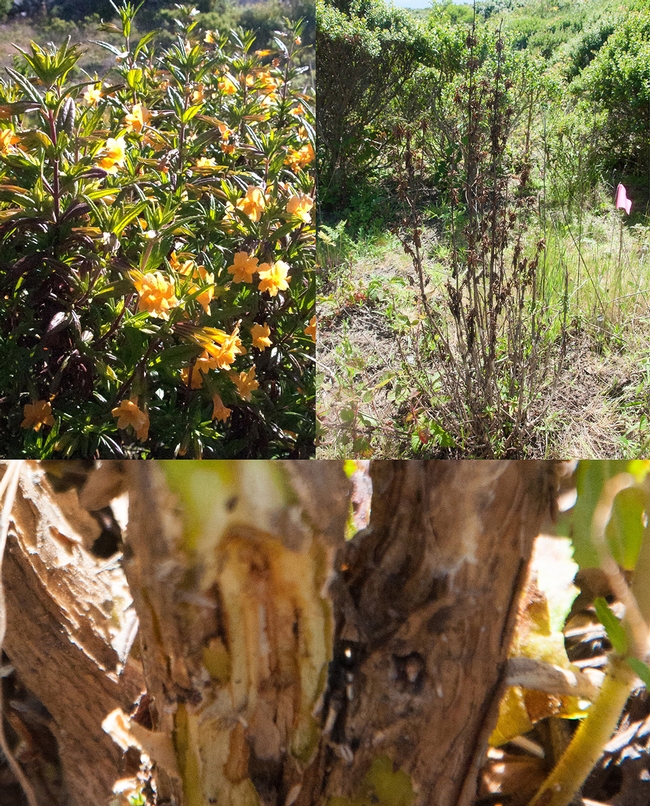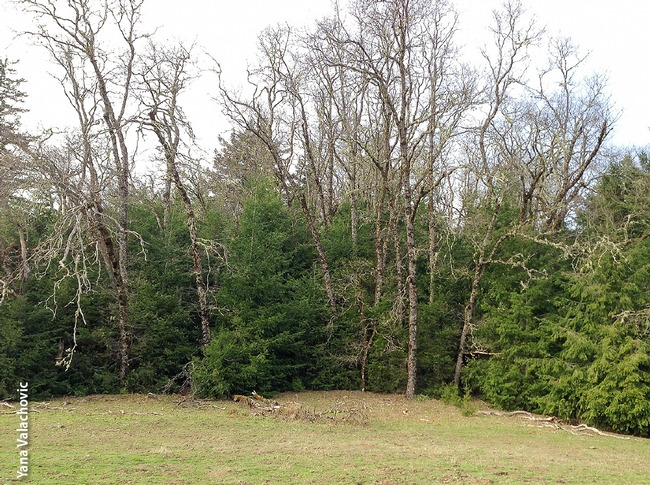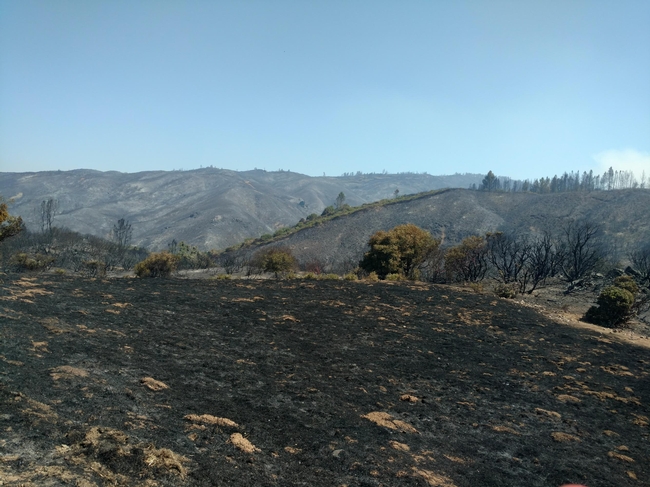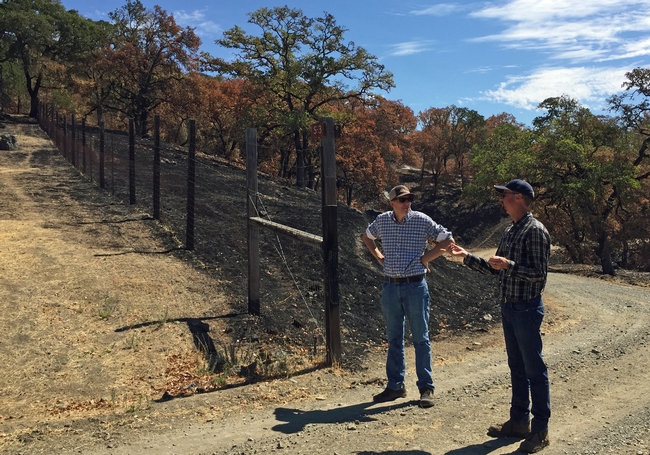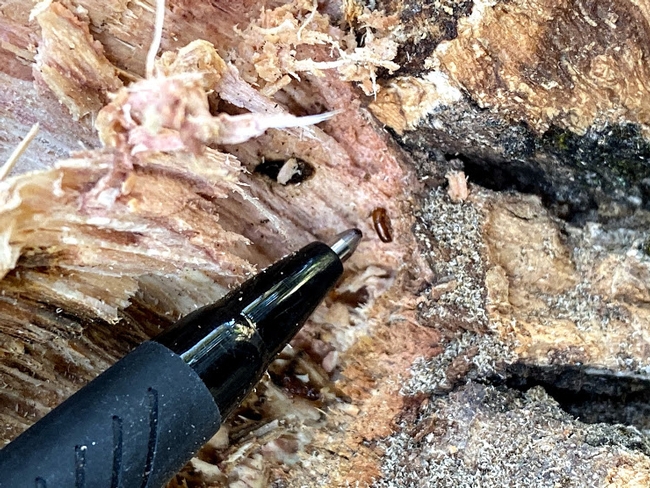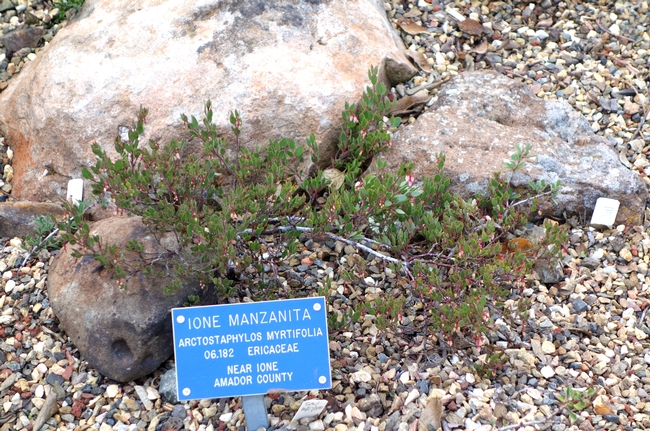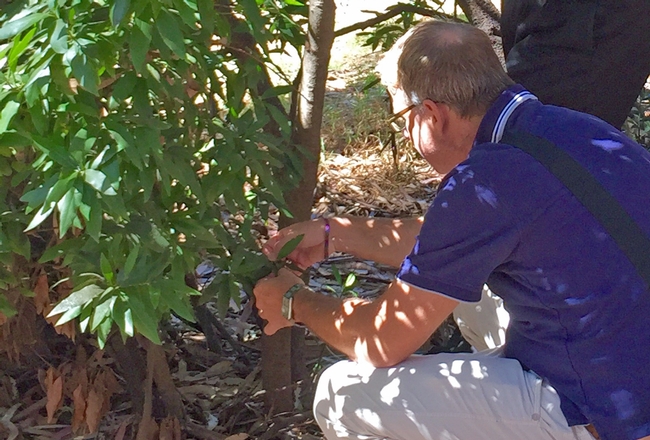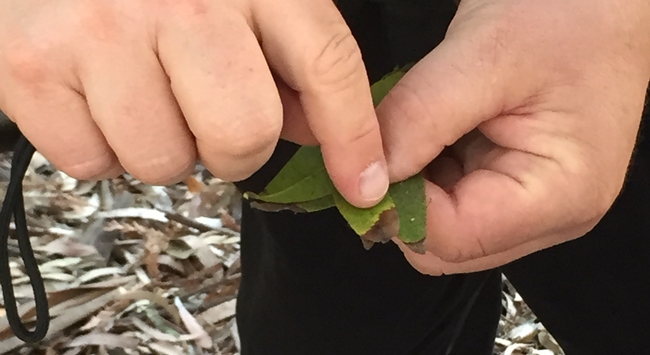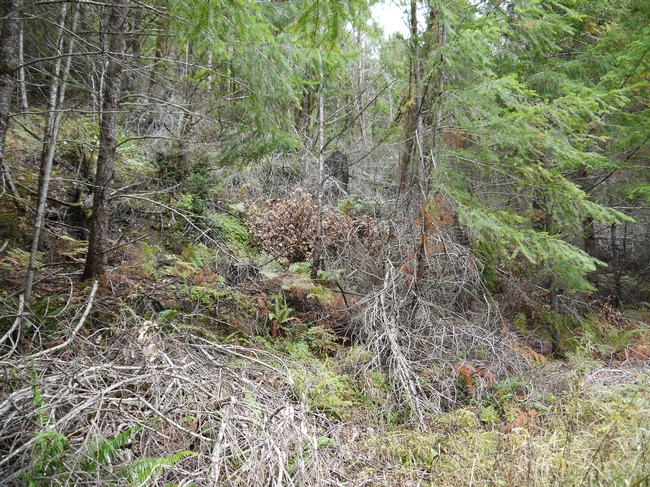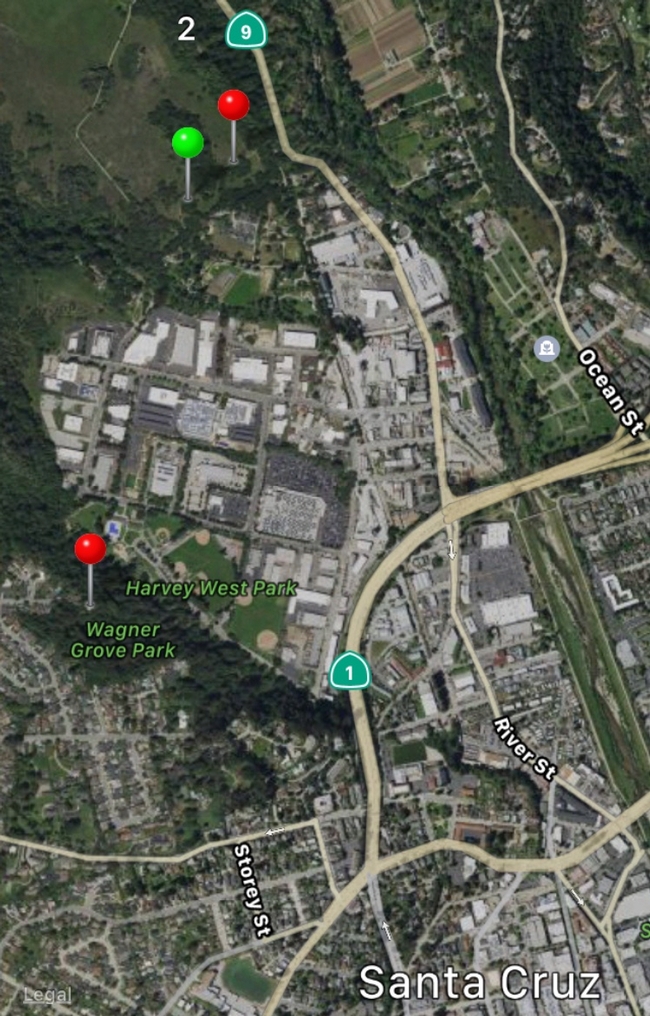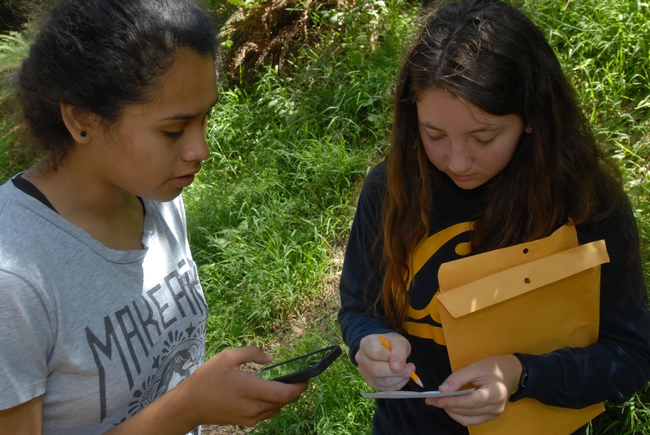Posts Tagged: oak
Organic Ag Institute begins forming knowledge network, assessing needs
Cal OAK Network to build on, grow connections between UC and organic community
After pioneering the organic movement in the 1970s, California now leads the nation in number of organic farms, total organic acreage and overall organic crop value. Attaining this status was no small feat, and largely driven by resourceful growers who developed and refined the wide range of novel organic farming practices seen in California today.
Now, with the creation of the Organic Agriculture Institute, the University of California will be able to leverage its vast capacity for research, extension and education to further improve the sustainability, resilience and profitability of organic agriculture in the state.
In its first major public initiative, the Organic Agriculture Institute – a program of UC Agriculture and Natural Resources – is conducting a statewide needs assessment for organic agriculture, as well as forming a knowledge-sharing network that connects UC experts with growers, processors, producer organizations, certifiers, crop consultants, community groups and state agencies.
“This network will be a sustainability partnership that enables learning, innovation and cooperation among organic agriculture stakeholders,” said Houston Wilson, director of the Organic Agriculture Institute, which was established in January 2020. “As facilitator of the Cal OAK Network, the Organic Ag Institute will serve as an intermediary that fosters communication among stakeholder groups, organizes discourse, forges new collaborations, and generally enhances coordination of stakeholder activities.”
By creating closer connections between the UC and the organic community, the Cal OAK Network will foster ongoing feedback cycles of knowledge and best practices, and in doing so help create the conditions and momentum to facilitate the development and adoption of organic production practices.
“The Cal OAK Network will better connect the organic community with UC technical and training resources, while at the same time providing a mechanism for that community to feed information back to the UC that helps us shape our programs at the Organic Ag Institute,” said Wilson, noting potential contributions in areas such as pest control, weed management and crop nutrition.
In the first 18 months of the Institute, Wilson has been charting the current landscape of organic agriculture in California, listening to the needs of stakeholders and working to position the Institute in a way that best uses the UC's unique research and extension capacities to support and augment existing efforts by growers and other groups.
The Institute recently received a planning grant from the National Institute of Food and Agriculture to conduct a formal needs assessment through summer 2022. In surveying growers and other stakeholders, the Institute seeks to identify their primary research and extension priorities, as well as gain a better understanding of the key people and organizations they currently rely on for information about organic production.
Through this process, a map of nodes and connections in the organic community will also take shape – and the roster of members for the Cal OAK Network will continue to grow. As Wilson points out, it is only through a diverse and robust information-sharing system that California organic agriculture will successfully adapt to challenges like climate change.
“We're trying to create a resilient infrastructure for engagement with organic stakeholders,” he said. “When we talk about sustainability in agriculture, part of that is having sustainable institutions that function well and can be flexible and dynamic as new challenges arise down the road.”
To learn more about and join the California Organic Agriculture Knowledge Network, visit organic.ucanr.edu and contact Wilson at hwilson@ucanr.edu.
Phytophthora invasions linked to ecological restorations
Biological invasions are one of the three main causes for biodiversity loss globally, together with urbanization and climate change. Not unlike animals and plants, microbes can become invasive in non-native ecosystems. Some microbial invasions can lead to novel plant diseases with direct and detrimental effects on terrestrial ecosystems. The plant trade, both international and domestic, is thought to be a major pathway for the introduction and spread of exotic plant pathogenic microbes. Some introductions are accidental, but systematic introductions are significantly more detrimental for the integrity of natural ecosystems.
In a new study published in the journal Biological Invasions, Matteo Garbelotto, a Cooperative Extension specialist and adjunct professor in the Department of Environmental Science, Policy, and Management (ESPM), investigates whether multiple species of the plant killer genus Phytophthora—which includes the infamous Sudden Oak Death pathogen—could have been brought into natural habitats during restoration projects. Through one of the first controlled studies on the subject, Garbelotto and Laura Sims, a study co-author at Louisiana Tech University, found that plants used in restoration projects often were infected and killed by one or multiple Phytophthora species.
From surveys of control undisturbed sites near failing restorations, as well as plant production facilities providing the plant stock used in these restorations, the authors were able to conclude that these pathogens were not already present in restored habitats. Rather, they were introduced through plants or soil contaminated in the plant production facilities themselves.
The researchers tested six plant species for the presence of Phytophthora in 14 study sites across three San Francisco Bay Area counties. A statistical analysis found significantly higher percentages of Phytophthora occurrences on plants and soil in restoration sites and adjoining disturbed sites than in control undisturbed sites, where no Phytophthoras were isolated. The researchers found greater rates of disease symptoms and plant death, as well as a lack of regeneration, where Phytophthoras were present.
“All other studies so far simply reported the presence of these soil borne pathogens in restorations, but without any solid experimental evidence that they were introduced through the restoration efforts,” says Garbelotto. “In this light, the paper is transformative. The fact that Phytophthoras were found in all restoration sites studied and on multiple plant hosts shows these are not isolated occurrences, but that habitat restoration projects in the near past have repeatedly and systematically resulted in the introduction of these aggressive pathogens.” He adds that the absence of these pathogens in neighboring unrestored and undisturbed sites suggests that at least some of the species found may be exotic, and particularly deadly, for plant hosts that have not previously encountered them.
“The second key result of our study was the finding that these pathogens are spreading invasively through infested soil and water well outside the borders of restorations”, says co-author Laura Sims. “This indicates that extremely costly restoration projects, rather than restoring the integrity of the ecosystem, may further deteriorate its health, by introducing invasive plant pathogens. Historically, man has never been able to eradicate these pathogens, once they have established in natural habitats. We have shown such establishment is happening in natural habitats near the restoration sites we studied”
The study was partially conducted in the Presidio of San Francisco, a national park site. “Plantings and landscape restorations are a big part of what we do in the Presidio,” says Christa Conforti, biologist and Integrated Pest Management Specialist with the Presidio Trust. “This study shows that restorations have unwittingly introduced plant pathogens that cannot feasibly be eradicated, and that repeated introductions are particularly dangerous. This evidence justifies investing our resources to ensure we take significant precautions when using nursery-grown plants in our landscapes, to help us meet our mission of protecting biodiversity and native ecosystems into the future.”
As a faculty member in ESPM, Garbelotto researches exotic forest diseases, fungal ecology, biodiversity, geonomics, wood decay and tree stability, and the management of forest diseases. He also runs a citizen science initiative in California to find and combat the exotic disease sudden oak death (SOD), known to have decimated native oak and tanoak populations. Garbelotto was featured in Breakthroughs magazine in 2019. The lab he runs also provides diagnostic services and forensic evidence on factors leading to tree failure.
The full study, titled “Phytophthora species repeatedly introduced in Northern California through restoration projects can spread into adjacent sites,” can be found on the Biological Invasions website.
Related articles:
Coordinated response to inadvertent introduction of pathogens to California restoration areas
Attention to oak woodland conservation does not wane amid COVID-19 crisis
California oak woodlands are highly prized ecoregions where stately trees, many of them hundreds of years old, are cornerstones of a habitat for wildlife and native plants. Sadly, some of these ecosystems are seriously threatened by exotic pests and diseases, encroachment by less desirable vegetation, and wildfire.
Each year, UC Cooperative Extension hosts workshops to share scientific developments aimed at conserving these important habitats – and the economic value of ranching – on oak woodlands, which are found on the lower elevation slopes of the Sierra Nevada, the Coast Range and other foothill areas of California.
Typically, the workshops are held in person and draw moderate-sized audiences for presentations, questions and answers, and field trips. Because of the COVID-19 pandemic, this year's workshop was offered online in April with pre-recorded presentations available for viewing at the participants' convenience and a live question-and-answer session on Zoom.
The retooled event garnered 500 registrants, over 300 views of the YouTube videos and 140 participants in the live Q&A session. The presentations and Q&A session are still available online for future viewing as well at http://cemendocino.ucanr.edu/Forestry/Workshops/California_Oak_Health.
“People from all walks of life participated, including those with professional and personal interest in oak woodlands,” said Yana Valachovic, UCCE forest advisor in Humboldt and Del Norte counties and a conference organizer.
Presentations at the 2020 conference included the following topics:
Encroachment by Douglas-fir
In Northern California, the biodiversity of oak woodlands is being threatened by Douglas-fir encroachment. The oaks' shade helps the young conifers get established with protection from harsh sun. In time, the fast-growing Douglas-fir trees pierce the oak canopies and begin to crowd out the areas' native understories, which are important for the diversity of birds, mammals and reptiles attracted to oaks.
As the Douglas-fir continue to grow and multiply, they threaten the very lives of the oak trees and the unique ecosystem they dominate.
To better understand the Douglas-fir encroachment, Valachovic established 10 research sites in Humboldt and Mendocino counties to gather information about the fate and the age of oaks. She and her research partners determined the ages of the oaks and firs, and counted the seedlings, saplings, snags and understory vegetation.
“With this research, we were able to demonstrate that even though the oak trees can be smaller in diameter, they are much older than the Douglas-fir trees,” Valachovic said. “The encroachment process is happening quickly, and the oaks are falling out of the system.”
The shift appears to have been initiated in the mid-19th and early-20th centuries, coinciding with the Gold Rush and wildfire suppression.
With the data confirming Douglas-fir encroachment, Valachovic turned her attention to oak woodland restoration. At 14 sites in Humboldt and Trinity counties, her team studied the effects of Douglas-fir removal.
“Grasses and forbs under the oaks reestablished. Diameter growth on the oaks increased,” she said.
These research findings contributed directly to changes in policy that had previously limited landowners' ability to remove and sell conifers encroaching on oak woodland. The research also helped create new funding opportunities to support oak woodland restoration and conservation in Northern California.
Case study of oak woodland wildfire recovery
In July 2018, about two-thirds of the 5,289-acre UC Hopland Research and Extension Center was burned by the River Fire.
The transformation of the land, which had likely been without a large wildland fire for at least 100 years, was intense and stressful, said UC Cooperative Extension forest advisor Michael Jones. However, it also provided a unique opportunity for researchers to compare the impact of wildfire on the resiliency of vegetation on grazed and ungrazed oak woodland.
Jones established 35 one-fifth acre research plots at the research center and collected data two months following the fire and one year later. The research will continue in the future to better understand long-term impacts, but Jones was able to share revealing early results at the workshop.
Right after the fire, in severely burned areas areas, the future of the oaks looked ominous. Jones predicted 40% tree mortality.
“The oaks were exposed to persistent, intense heat. They were cooked,” he said. “But two months after the fire, we were already seeing basal sprouts. This was an amazing response by the trees. Oaks are pretty damn tough.”
A year after the fire, surveys showed that tree mortality in the burned areas was 25%, much less than Jones' early predictions. While some management for specific situations in severely burned areas may be necessary – such as removal of hazard trees, reducing fuels in defensible spaces or removal to control invasive species – the results of this work show the trees recover naturally.
“Esthetically, I know these systems aren't as pleasing as they were before, but ecologically, they are healthy and recovering,” he said. “In 100 years, it will look just as good as before the fire.”
Fire impacts in woodland areas previously grazed and not grazed
The fire on the research station also permitted Jones to compare the fire's differing impact on non-grazed and grazed oak woodland. At first, the grazed areas looked almost unscathed with minimal flame scorching on the bark, while an area where the pasture hadn't been grazed for 25 years had evidence of much higher severity fire.
“Grazing is a phenomenal way to help manage fuels,” Jones said. However, the grazed areas displayed ecological shortcomings a year later.
“In grazed pastures, the large mature trees were still alive, but there was no oak regeneration (basal sprouting or seedlings),” Jones said. “In the ungrazed area, a lot of biomass had been killed, but there's nearly 100% resprout of oak trees and we have an impressive amount of oak seedling recruitment.”
Jones said he isn't discouraging grazing.
“But it is important to protect sites from grazing, and especially wildlife browse, when a landowner or land managers' objectives are to regenerate or conserve oak woodlands,” Jones said.
New ambrosia beetle another threat to California oaks
Akif Eskalen, UC Cooperative Extension specialist in the Department of Plant Pathology at UC Davis, has identified a new insect-fungus team that causes oak borer wilt in Northern California Valley and Blue Oaks. It is an ambrosia beetle, commonly known as Mediterranean Oak Borer, which carries several fungi in its mouth. The beetle bores into the tree and introduces fungi to grow for food. The fungi spreads and disturbs the transportation of water and nutrients, causing wilt in the tree.
The oozing and staining lesions on the bark are similar to other oak fungal diseases, such as sudden oak death. The beetle – native of Mediterranean basin countries in Africa, Asia and Europe – cannot fly far, so most likely is transported for long distances on infested firewood.
During the workshop, Eskalen suggested not moving firewood, removing heavily infested trees and chipping infested wood into 1-inch particles to reduce the spread of the ambrosia beetle and its fungal partner. He asked viewers to report any suspected oak tree infestations to the local agricultural commissioner, CDFA Diagnostic Laboratories, UC Cooperative Extension advisors or CALFIRE. Chemical options for sparing oaks from the ambrosia beetles' devastation are under investigation.
Threats to oaks and other native plants from root rotting Phytophthora
Restoration plantings have inadvertently introduced plant pathogens to native oak woodland ecosystems in California, said Ted Swiecki of Phytosphere Research, an organization that provides consulting services related to natural resource management, horticulture, urban forestry and agriculture. The group of pathogens causing the damage are largely from the Phytophthora genus, first described in the 1860s. The name translates from Greek to “plant destroyer.”
Swiecki has observed when Phytophthora infested plants and soils are introduced to native habitats, the pathogens can attack various native plants, including toyon, madrone, manzanita and full-grown oaks. Once established, the pathogen can spread along drainages, by moving soil from one area to another and by hitchhiking on equipment, tires and hiking boots.
The pathogen can easily be overlooked at nurseries, which, by their nature, have conditions that favor Phytophthora development. Plants at nurseries are well watered, have high root density and are often placed on the ground where they can pick up pathogens.
He said the best approach to tackling Phytophthora is not using nursery stock for restoration or beautification of natural oak woodland. Direct seeding, using natural regeneration, or onsite propagation are safer ways to enhance vegetation in oak woodland.
“It's easier to prevent Phytophthora from being introduced in the first place and much cheaper and more effective than trying to eradicate it later,” Siewcki said.
Citizen science SOD Blitz starts April 11 with new COVID-19 safety measures
With Californians sheltering in place to stop the spread of new coronavirus COVID-19, the annual citizen science project to map sudden oak death disease has been redesigned to ensure the safety of participants. The first in a series of SOD blitzes of 2020 will be April 11 in Napa. The events are free.
“We have been able to redesign the 2020 SOD Blitzes to make them a safe and legal activity that allows volunteers to exercise outdoors, and this powerful citizen science program will help us protect our forests' health,” said Matteo Garbelotto, UC Cooperative Extension forest pathology specialist and adjunct professor in the Department of Environmental Science, Policy and Management at UC Berkeley and event organizer.
Sudden oak death disease has killed more than 50 million of the state's iconic oaks and tanoak trees between Humboldt County and Monterey County, threatening survival of several tree species. In 2019 alone, 1 million tanoaks succumbed to sudden oak death, according to 2019 tree mortality data released by the U.S. Forest Service.
“The presence of new SOD strains is alarming and the SOD blitzes are the best, if not the only, program to intercept them before they spread,” Garbelotto said.
SOD Blitz volunteers will register online and take the training online at www.sodblitz.org to learn how to identify SOD symptoms and to carefully collect symptomatic leaves from California bay laurels and tanoaks. Collection and survey materials, which have been prepared in a sterile environment, will be picked up by participants at a local SOD Blitz station conveniently located near a parking lot. They can return samples to the same SOD Blitz station or by mail.
As citizen scientists, volunteers should focus on following safety guidance as well as adhering to research protocols. Social distancing – at least 6 feet away from other volunteers – and clean “housekeeping” rules will be strongly enforced when picking up or returning materials and during leaf collection.
For parents who are home schooling their children, this is an activity that the family can do together.
Garbelotto encourages tree care specialists to participate in the SOD blitzes.
“Besides offering free bay laurel and tanoak tests for their clients, we now offer tree care professionals free enrollment in UC Berkeley Forest Pathology Laboratory's OakSTePprogram, which allows them to test oaks for SOD infection,” Garbelotto said.
For more information, visit www.treefaqs.org or email the organizer of the SOD Blitz in your community (See schedule below).
Sudden Oak Death Blitzes 2020
All collection materials will be provided, but participants need a mobile phone or GPS device to install the free SODmap mobile app.
New format due to COVID-19
1. Training (30 minutes) and sign-up (5 minutes) must be done online at www.sodblitz.org before collecting the sampling materials at the SOD Blitz Stations in the locations specified below. Please sign up before you start the survey, and preferably when you take the online training.
2. Once at your local SOD Blitz Station you can pick up one or two collection packets following the social distancing rules of the State of California clearly specified in the online training. Stay at least 6 feet from other collectors. Bring your own pencil. Each packet allows you to sample 10 trees. Do not pick more unless you discussed it with the organizer.
3. Before you start the survey, make sure you have downloaded the free App “SODmap mobile” to determine the exact location of the trees you sample.
4. Each SOD Blitz has a start and end date, including the hour. You can pick up materials at the start time and you have to return your samples and any unused collection materials by the end date and cutoff time.
5. You can sample private properties with the owner's permission, alongside public roads and in parks or open spaces that are open to the public.
6. If you have any questions, please email your local organizer. Thank you so much for your participation.
Napa Blitz
Saturday, April 11 at 10 a.m. to Tuesday, April 14, 10 a.m.
SOD Blitz Station located on front porch of the Napa County Agriculture Commissioners Office Building 1710 Soscol, Napa
Please mail samples to UC Berkeley using the preprinted mail labels and postage included in each packet.
Contact: Bill Pramuk info@billpramuk.com
For a schedule of SOD Blitzes at other locations, visit https://nature.berkeley.edu/matteolab/?page_id=5095.
Volunteers needed to stop SOD from killing oak trees
“Two new dangerous SOD strains are at the doors of our forests,” said Matteo Garbelotto, UC Cooperative Extension forest pathology specialist in the Department of Environmental Science, Policy and Management at UC Berkeley. To assess the movement of SOD, he has mobilized citizen scientists for what he calls “SOD blitzes.” The first in a series of SOD blitzes of 2020 will be April 11 in Napa.
“We had some great results last year and participation continued to be good after 13 years of SOD blitzes,” Garbelotto said.
In Sonoma County, the 2019 SOD infection rate doubled that of 2018, and in Napa County, SOD detection was four times higher than the previous year. In the East Bay, between Richmond and San Leandro, SOD infection spiked – from 1% to 12%. The SOD infection rate tripled – from 6% to 18% on the western slopes of the Santa Cruz Mountains in San Mateo County.
As the disease expands its path of forest destruction, the UC Cooperative Extension scientist says more volunteers are needed to sample trees.
“The disease is moving to new counties outside of the current area of infestation,” Garbelotto said. “Even in our Bay Area neighborhoods, SOD of 2019 is not the same SOD of 10 years ago: different distribution, new local outbreaks, and new hosts are emerging, as the disease becomes more and more established in its new home.”
Garbelotto sees the SOD blitzes as the only hope for early detection of the new SOD strains.
“If these new strains arrived and spread in our forests, they could deliver a fatal blow to our forests,” he said. “By collecting symptomatic plant material in their neighborhoods, volunteers will make the most significant contribution possible to intercept these strains.”
Volunteers are taught to identify SOD symptoms and to carefully collect symptomatic leaves from California bay laurels and tanoaks. Participants in the SOD blitzes will be asked to quantify their efforts to stop SOD to show public interest in saving oaks and tanoaks when applying for funds to defeat the tree-killing disease.
Garbelotto is encouraging tree care specialists to participate in the SOD blitzes.
“We have enhanced the benefits for tree care professionals who participate in the blitzes,” Garbelotto said. “Besides offering free bay laurel and tanoak tests for their clients, we now offer them free enrollment in UC Berkeley Forest Pathology Laboratory's OakSTeP program, which allows tree care professionals to test oaks for SOD infection. It could be enormously beneficial to everybody.”
For more information about the SOD blitzes, visit http://ucanr.edu/sodblitz2020faq or www.sodblitz.org. See the 2020 SOD Blitz schedule at http://ucanr.edu/sodblitz2020.

